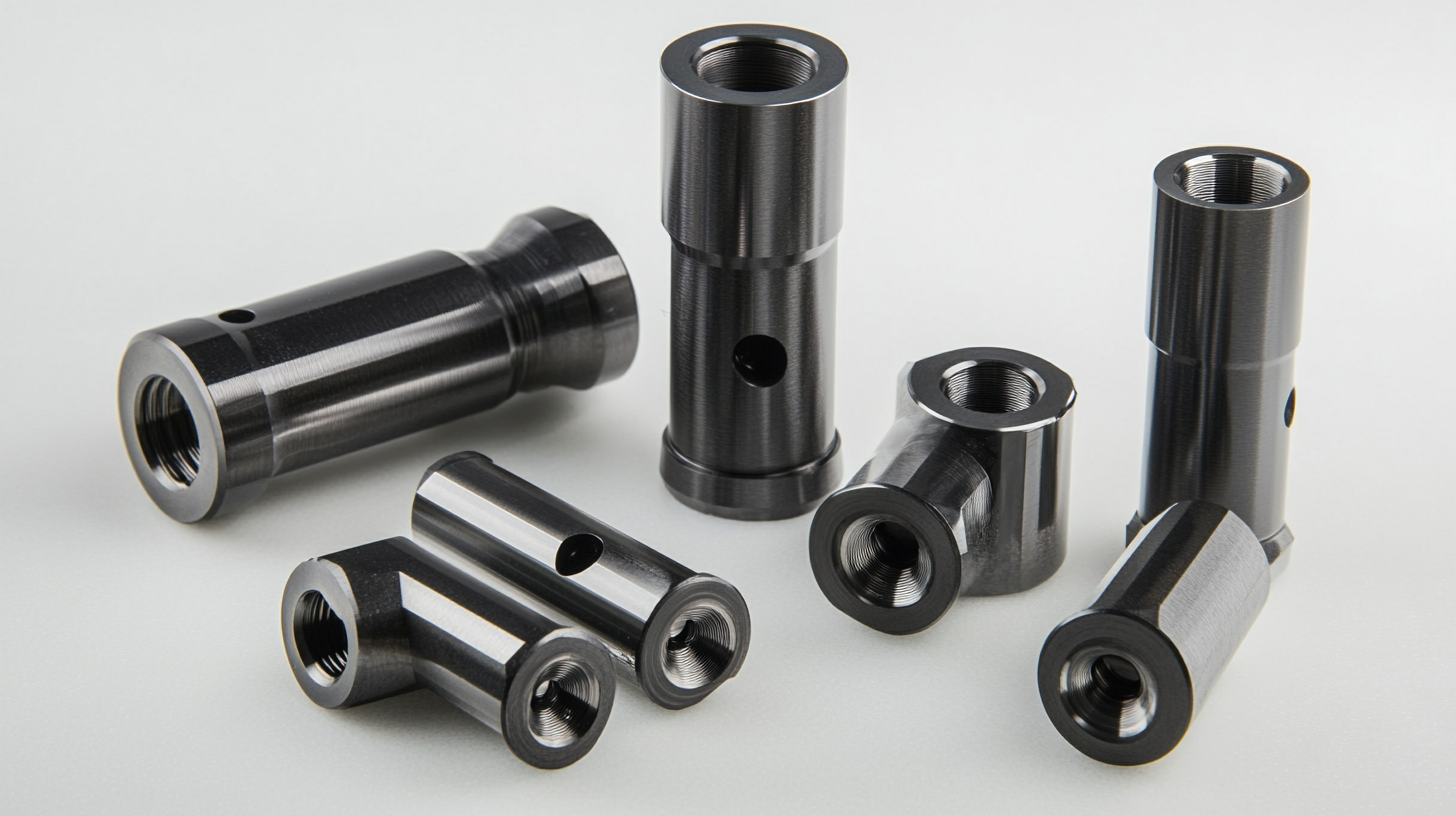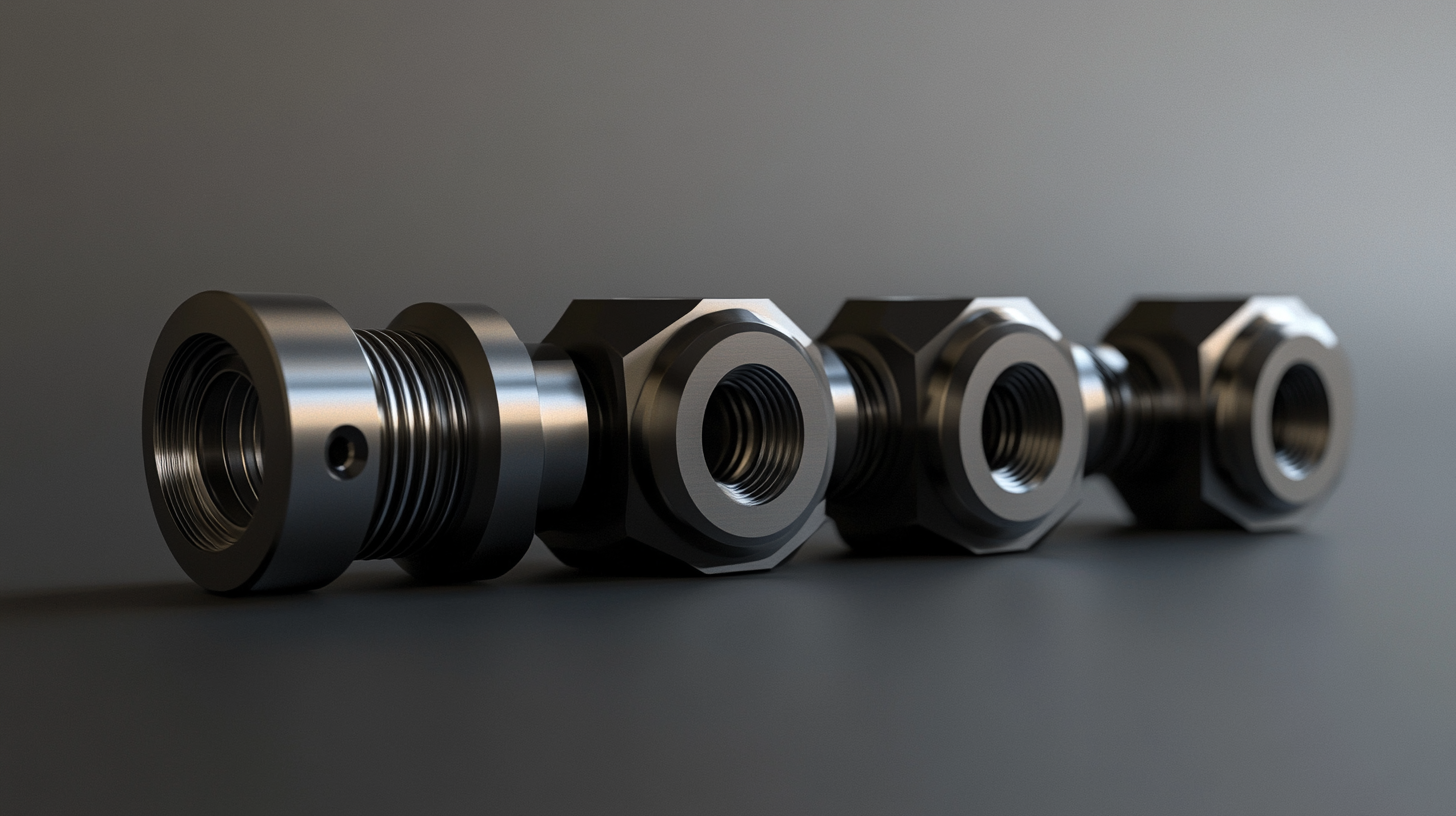
- sales@bjbod.com
- Mon - Sat at 7:00AM to 9:00PM

In the world of precision machining, selecting the appropriate tools is critical for ensuring efficiency and accuracy in operations. Among the various components used in machining processes, Dead Length Collets stand out due to their unique design and functionality. These collets provide a reliable grip on materials without changing length during clamping, making them an indispensable choice for high-speed and intricate applications. However, with numerous options available in the market, it can be a challenge to determine which Dead Length Collets are best suited for specific operational needs.
This blog aims to provide essential insights that will guide you in your selection process for Dead Length Collets. By understanding the core characteristics and considerations associated with these tools, you will enhance your ability to optimize workflow and improve machining outcomes. From material compatibility and size variations to specific machining tasks, our exploration will equip you with the knowledge needed to make informed decisions that elevate your operations and ultimately lead to superior results.

When selecting dead length collets for precision performance, several critical factors come into play. First and foremost, the material and design of the collet should match the specific requirements of your operations. High-quality materials, such as hardened steel or specialty alloys, can significantly enhance durability and reduce wear over time. This is essential for maintaining accuracy and extending the life of your tooling. Another key consideration is the collet size and compatibility with existing equipment. It's crucial to ensure that the dead length collets fit seamlessly with your machine's specifications. This not only ensures effective gripping but also provides stability during machining operations, which is vital for achieving tight tolerances. Additionally, different applications may require different collet designs, so understanding the nuances of your projects can lead to better handling and improved outcomes. Lastly, don’t overlook the ease of operation when selecting dead length collets. Collets that can be easily loaded and unloaded will save time and reduce operator error. Look for designs that facilitate quick changeovers, especially in environments where efficiency is paramount. Taking these factors into account will empower you to make informed decisions, thereby optimizing your machining processes and ensuring precision performance.

When selecting dead length collets for your operations, understanding the different types available and their specific applications is crucial. Dead length collets are designed to provide maximum rigidity and precision during machining processes. The most common types include standard collets, which are versatile and can accommodate a range of workpiece sizes, and specialized collets, which are tailored for specific applications, such as holding complex shapes or providing enhanced grip for delicate materials.
In the automotive industry, effective tool holders, including dead length collets, are essential for achieving high efficiency and accuracy. Recent innovations in milling and drilling technology have significantly improved the performance of tooling systems. New advancements in collet design lead to superior rigidity and reduce vibration, which is vital for precision operations. By integrating these advanced tools, manufacturers can significantly enhance productivity and ensure high-quality outputs.
Moreover, understanding the nuances of each collet type can also lead to better setup times and more streamlined workflows. For example, choosing the right collet can minimize tool changes and reduce cycle times, ultimately contributing to a more efficient production process. By investing time in selecting the appropriate dead length collet, businesses can harness the full potential of their machining capabilities and stay competitive in an evolving market.

Dead length collets are an indispensable tool in modern manufacturing, offering distinct advantages that enhance precision and efficiency. By locking onto the workpiece through a closed mechanism, they ensure consistent and accurate gripping, which is crucial for achieving tight tolerances. This reliability allows manufacturers to reduce error margins and enhance product quality, making dead length collets a preferred choice for various machining operations.
One of the key benefits of employing dead length collets is their ability to simplify the setup process. Unlike traditional collets that require multiple adjustments, dead length collets provide quick loading and unloading of workpieces, minimizing downtime. This speed not only accelerates production cycles but also improves overall throughput, which can significantly impact the bottom line. As a result, companies can optimize their operations and stay competitive in a demanding market.
Moreover, dead length collets are exceptionally versatile, accommodating a wide range of workpiece sizes and shapes. This adaptability makes them suitable for various applications, from high-volume production runs to intricate, custom jobs. By integrating dead length collets into their workflows, manufacturers can achieve greater flexibility and responsiveness to changing project requirements, ultimately leading to enhanced operational efficiency.

When it comes to optimizing machining operations, the choice of dead length collets is pivotal, particularly concerning the materials used in their construction. The effectiveness and reliability of these collets can significantly influence productivity, accuracy, and ultimately, the quality of the finished product. According to a report by the Manufacturing Institute, selecting the right materials can enhance clamping precision by up to 30%, yielding a direct improvement in operational efficiency.
The most common materials used for dead length collets include hardened steel, aluminum, and various alloys, each offering unique benefits. Hardened steel collets are widely recognized for their durability and strength, making them suitable for high-torque applications. In contrast, aluminum collets provide a lightweight alternative, reducing the overall mass of the spindle system and thus lowering the energy required for rotation. Furthermore, innovative materials such as nitrided alloys offer increased wear resistance, contributing to longer tool life and reduced downtime.
It is also important to consider the compatibility of collet materials with the workpieces being machined. For instance, using a collet made from a material that can generate friction and heat during machining might lead to part distortion or degradation. A study from the American Society of Mechanical Engineers (ASME) concluded that improper material selection could result in a 15% increase in scrap rates, directly affecting the bottom line. Investing time in understanding the material properties of dead length collets can, therefore, lead to more effective operations and better overall results.
When it comes to dead length collets, proper maintenance is pivotal to ensuring their longevity and effectiveness in your operations. First and foremost, regularly inspecting the collets for any signs of wear or damage is essential. Pay close attention to the gripping surfaces and any areas that come into contact with the workpiece. Even minor nicks or scratches can compromise performance, leading to potential operational issues down the line.
Another critical aspect of care is cleaning. Contaminants such as metal shavings, dust, and oil can accumulate and adversely affect the collet’s functionality. Utilizing a soft brush and a mild solvent can help remove any debris without damaging the collet's surface. After cleaning, it’s beneficial to apply a light coat of lubricant to the moving parts to ensure smooth operation and prevent rust.
Additionally, ensure that collets are stored properly when not in use. Using dedicated storage racks or cases can protect them from physical damage and environmental factors that could lead to corrosion. Taking these steps not only enhances the performance of your dead length collets but also extends their service life significantly, maintaining precision and reducing the frequency of replacements.